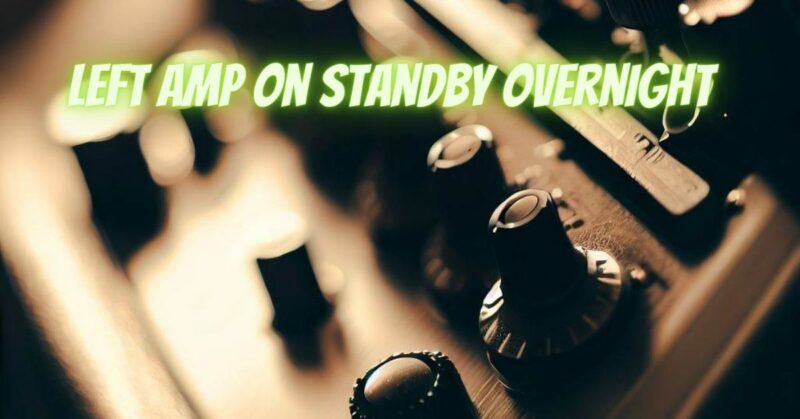Amplifiers, whether they are for audio systems or musical instruments, are essential components in the world of sound reproduction. Many amplifiers come equipped with a standby mode, which allows users to keep the device partially powered while not in active use. However, leaving an amplifier on standby overnight is a topic of discussion among audio enthusiasts, as concerns about energy consumption, wear and tear, and potential damage arise. In this article, we will explore the implications of leaving an amplifier on standby overnight and whether it’s a safe or harmful practice.
Understanding Standby Mode
Standby mode in amplifiers serves two primary purposes:
- Energy Conservation: When an amplifier is in standby mode, it reduces power consumption significantly compared to full operation. This is an energy-saving feature designed to reduce electricity usage when the amplifier is not actively in use.
- Quick Startup: Standby mode allows the amplifier to stay partially powered, making it faster to start up when you want to use it. This can be convenient for those who prefer not to wait for the amplifier to warm up from a completely cold start.
The Implications of Leaving an Amplifier on Standby Overnight
- Energy Consumption: While standby mode is energy-efficient compared to full operation, leaving an amplifier on standby overnight still consumes a small amount of electricity. Over time, this can contribute to energy bills and environmental impact.
- Wear and Tear: Some argue that keeping an amplifier in standby mode, even for extended periods, can lead to wear and tear on certain components, such as capacitors and switches, due to the constant trickle of electricity.
- Heat Generation: Amplifiers in standby mode may continue to generate some heat. This heat, if not dissipated properly, can potentially affect the longevity and performance of sensitive components.
- Convenience vs. Energy Savings: There is a trade-off between the convenience of a quick startup and the energy savings gained by turning the amplifier off completely. Users must weigh their preferences and environmental concerns.
Safe Practices for Using Standby Mode
- Short-Term Use: Standby mode is ideal for short breaks or pauses in playback or practice sessions. It allows you to keep the amplifier ready for immediate use without a significant impact on energy consumption or component wear.
- Consider Energy Efficiency: If you are concerned about energy consumption, consider using a power strip with a master-slave function. When you turn off the main device (e.g., your audio source or instrument), the power strip will automatically cut power to connected devices, including the amplifier.
- Maintenance: Regularly inspect and maintain your amplifier to ensure that it operates optimally. Cleaning, checking for loose connections, and addressing any issues promptly can help prolong the lifespan of your amplifier.
- Use as Intended: Follow the manufacturer’s recommendations regarding standby mode and power cycling. Manufacturers design amplifiers to handle standby operation, but it’s essential to use them as intended to minimize potential wear and tear.
Leaving an amplifier on standby overnight can be a convenient way to ensure quick startup, but it’s essential to strike a balance between convenience and energy conservation. While modern amplifiers are designed to handle standby mode without significant harm, users should be mindful of their energy usage and consider using energy-saving practices when possible. Regular maintenance and responsible use of standby mode can help maximize the lifespan and efficiency of your amplifier while minimizing its environmental impact.


